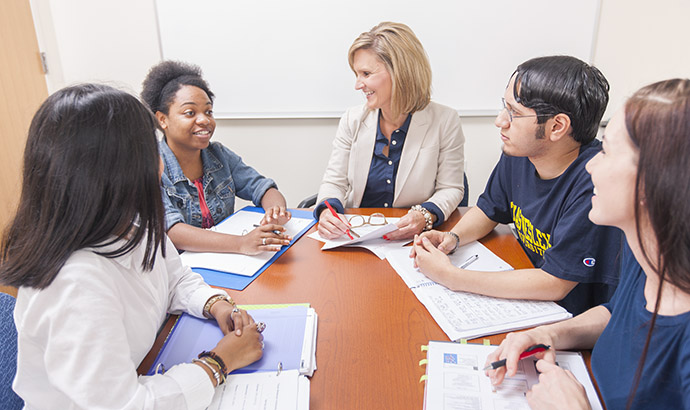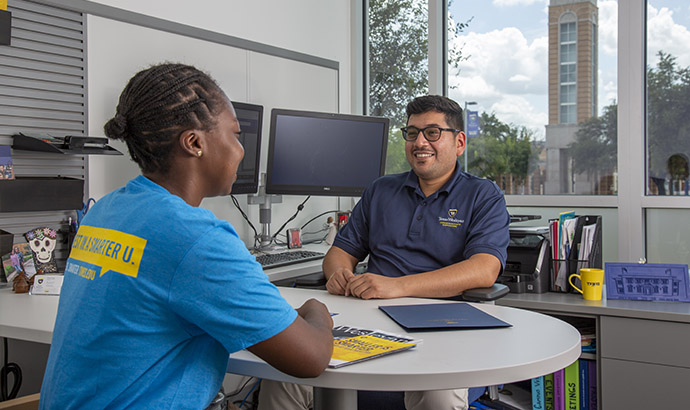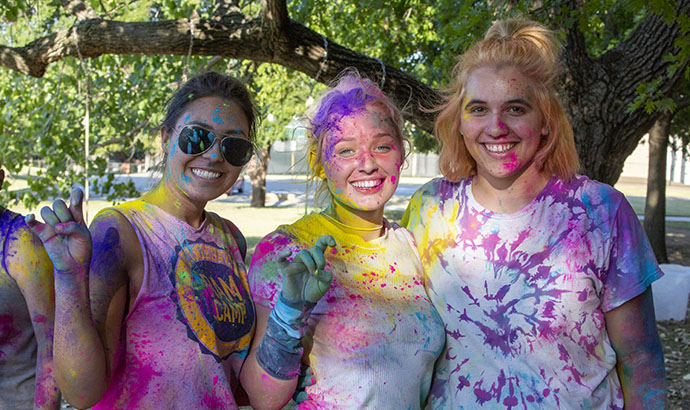Taking Questioning To Higher-Level Thinking
.jpg)
By Tim Whiting
“The impulse to answer a question-any question-is as automatic as the ‘fight or flight’ response. Everyone, including that rare individual who refuses to answer, pays more attention to a question than a statement.”
-Dorothy Leeds, author of The 7 Powers of Questions
Questioning is more than the 5 Ws (and 1 H). It is more than getting the answer “right.” It can lead to deep thought and deeper discussions. It can be a powerful tool for a teacher but an even more powerful tool for the student.
Questioning: Why do we care?
The proper use of questioning in the learning environment can best be summed up with a quote from the American Journal of Pharmaceutical Education:
“Using questions to teach is an age-old practice and has been a cornerstone of education for centuries. Questions are often used to stimulate the recall of prior knowledge, promote comprehension, and build critical-thinking skills. Teachers ask questions to help students uncover what has been learned, to comprehensively explore the subject matter, and to generate discussion and peer-to-peer interaction. Student-initiated questions increase higher-order learning by requiring them to analyze information, connect seemingly disparate concepts, and articulate their thoughts.
Indeed, questions are ubiquitous, but are the right kinds of questions – ones that promote learning, not recall – asked at the appropriate time? Poor questions can stifle learning by creating confusion, intimidating students, and limiting creative thinking.
Effective questions asked in a psychologically safe learning environment support student learning by probing for understanding, encouraging creativity, stimulating critical thinking, and enhancing confidence.” (Tofade et al., 2013)
Keep in Mind
Questioning is a powerful tool not only for the teacher but also for the student. We might be fooled to think that the one that talks the most controls the conversation but reality is that the one that asks the questions directs where the conversation goes. With this in mind, questioning is a natural way to scaffold learning and create a ladder for the student to climb. Questioning does not have to be spontaneous but rather can be intentional and planned. A seasoned lawyer will plan questions out in order to get the information desired from the witness. Same can be done in a learning environment. And questioning should not be surface level. Dig in by going three questions deep. Do not stop with “What is the significance of the year 1492?” What impact did those events have? Who was impacted? In what way were they impacted? Used properly, with intention, and at the right time, questioning strategies can impact critical thinking, scaffold learning, build relationships, and promote active learning in our students.
Asking Questions
Getting Started
Create a safe environment. From the first day of class, you create the learning environment (both in-person and virtually). How you respond to queries from students will determine how they respond in the future. Providing students opportunities to ask questions and guiding them in questioning strategies shows that you are interested in their academic growth and that you will provide the environment for that.
Take the time to prepare your questions. Whether it be to use in a lecture, in a discussion, in an activity, or in a written assignment, be intentional with the questions that you will ask, when you will ask it, and where you plan on going with it.
Set goals for your questions and expected outcomes.
Script it. Know not only the question that you will ask but also understand the potential responses. How will you respond to the answers? How will you respond to the incorrect answers? What will your follow up questions and responses be?
Establish Expectations. Whether it is at the beginning the semester or the beginning of the class, establish expectations early (“I will be asking questions and I expect responses.”) As you go through the process of asking questions in lectures, activities, and discussions, stick to your expectations. Students will learn what you are looking for.
Create a system. Establish a regular routine for questioning and routines. For instance, if each class starts with the same questions (“Give me something good that happened to you” “What is one concept from last class that we discuss?”) then they can be ready. If you surprise students with questions, they will surprise you with their answers.
Personal reflection. Build in time for your own personal reflection. What questions did I ask? Could I have asked it differently for different results?
Types of Questions
Higher Level questions: Use Blooms Taxonomy to determine the level of your questioning. You can always adjust based on responses.
Divergent questions: Open ended, with multiple plausible responses allows the discussion to come to life
No “Yes/No Answers”: Avoid questions that allow for a simple yes or no answer. Even if the answer is yes or no, have students explain how they came to that conclusion.
Relatable questions: connect students to the teacher and helps the student to make personal connections.
Build relationships: You can ask students questions not related to the academic setting to show interest and build relationships but, what if you did this within the academic setting? What if you ask questions that relate the academic content within the context of their life and interests?
Expand the context of your questions: Ask questions that connect to other concepts both within the subject and within other courses. Keep in mind...your course may not be the most important to your students.
Structured questions: If a question is unstructured, it can be unclear and limits the conversation. (e.g., "What's at work in this solution?") These are wide open and can feel riskier to answer or can elicit responses outside of the relevant area. A structured question (e.g., "What are some of the chemical structures at work in this solution according to our model?”) clarifies your intent and helps to guide the student in their answer.
Questions used for scaffolding: Questions can be used as steps to build up to a more complex issue. By using questions to review and retrieve knowledge, students can make connections at a higher level
Strategies
Ask questions that need an extended response to prompt conversation
Ask single questions at a time and build from there
Give a warning. Let students know who will be called on, when, and why. (“After ____, gives us their answer, I will ask _____ for an example as well”).
Building wait time and think time. Let students think about the question and even prepare their answer.
Think-Pair-Share. This strategy provides time for students to think about their answer and to even reflect on their answer before the entire class hears the answer.
- Think. Provide a question to the group and give students a minute to come up with the answer. Encourage them to write the answer.
- Pair. Have students turn to a partner (preferably one sitting next to them) and discuss their answers.
- Share. As a group, have students share their answers. Students will often include what they discussed with their partner.
First Question/Last Question. Provide questions at the beginning of the lecture. That way, the students can process the questions during the lecture. Then, during or at the end of the lecture, bring up a question. They have had time to think about it.
Last Question/First Question. At the end of the class, inform students of the question that you will start the next class with. They will have plenty of time to prepare.
Instead of asking “Are there any questions?” try “What questions do you have?” A simple change of wording forces the respondent to think about it.
Rumohr (2013) explains that "as the use of wait-time increases, so do:
- The number of student responses.
- The number of unsolicited but appropriate responses.
- The use of higher levels of logical thinking.
- The incidence of speculative thinking.
- The number of questions students ask.
- Students supporting their answers with evidence, logic, and details.
- Student-to-student communication and exchanges.
- The number of positive responses.
- The students’ confidence in their ability to construct explanations."
Responses
Listening Actively
- Repeat questions/comments for the class to hear.
- Repeating questions gives you time to think about it. It also enables students to think about it.
- Signal that you are listening. Stop what you are doing. Provide eye contact.
- Repeat/paraphrase the question/comment.
- Acknowledge all student contributions.
Responding to questions
- Provide reinforcement (verbal and non verbal) even if it is the “wrong answer.”
- The fastest answer is not always the best answer. Tell students that you will wait 20-60 seconds before accepting answers.
- Turn the “wrong” answer into the “right” answer. This can be done through reinforcement, asking follow up questions, refocusing as needed, digging into the student’s response, and utilizing the responses of other students.
- Ask follow-up questions that dig into the topic. Allow other students to bring up questions as well.
- Adjust/Refocus/Pivot
When students don’t respond...
- redirect to another student
- rephrase the question to a lower level of thinking
- take a step back and ask questions that will lead to the answer.
Responding to student questions
- Answer the question directly and clearly.
- Ensure that the answer is clear and concise. Provide examples if possible.
- Use questioning to attempt to have the student answer their own question.
- Redirect the question to the class. Have students engage in a discussion.
- If needed, ask the student to stop after class for an in-depth answer.
- Defer the question to an appropriate time
(“Well, that is the topic of our next class so...stay tuned.”)
You can vary your responses in the following ways:
- Restate what the speaker has said to reinforce the point.
- Invite the student to elaborate: "Tell us more about that."
- Ask for clarification: "What do you mean by that?"
- Expand the student's contribution: "That's right, and to follow up on that point…"
- Acknowledge the originality of the response: "That's a good point. I hadn't thought of that."
- Connect the students' response with other students' comments.
Admit when you don’t know the answer
- Never fake it
- Ask the class if anyone knows the answer (be sure to verify any responses)
- Suggest resources that would enable the student to find the answer.
- Volunteer to find the answer yourself and report back at the next class.
After answering the question, ask the student “Did that answer your question?”
Support
Would you like support in using these strategies in your course and in your teaching? The CETL can help. Reach out to set up a consultation. cetl@txwes.edu
References
Leeds, D. (2000). The 7 Powers of Questions: Secrets to Successful Communication in Life and at Work. Penguin.
Lovett, Marsha C. et al. How Learning Works: 8 Research-Based Principles for Smart Teaching. Jossey-Bass, 2023.
Questions to provoke critical thinking. (n.d.). Sheridan Center for Teaching and Learning | Brown University. https://sheridan.brown.edu/resources/classroom-practices/discussions-seminars/questions-provoke-critical-thinking
Question Strategies | Centre for Teaching Excellence | University of Waterloo. (n.d.). https://uwaterloo.ca/centre-for-teaching-excellence/catalogs/tip-sheets/question-strategies
Questioning strategies. (n.d.). https://citl.illinois.edu/citl-101/teaching-learning/resources/teaching-strategies/questioning-strategies
Rumohr, F. (2013). Reflection and inquiry in stages of learning practice. Teaching Artist Journal, 11(4), 224-233.
Tofade, T., Elsner, J., & Haines, S. T. (2013). Best practice strategies for effective use of questions as a teaching tool. American Journal of Pharmaceutical Education, 77(7), 155. https://doi.org/10.5688/ajpe777155







